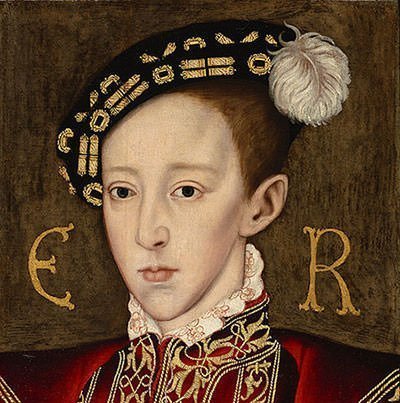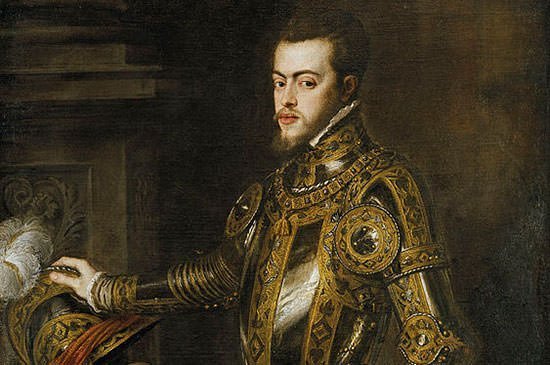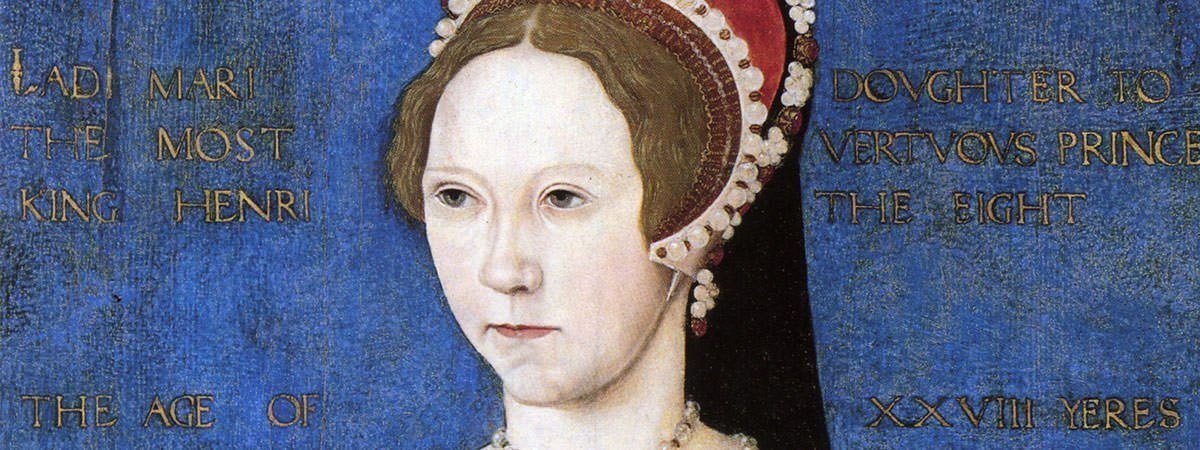Mary I was the first queen regnant in the history of England but she is more known for the hundreds of persecutions of Protestants that were carried out during her reign. She is condemned for creating an anti-Catholic and anti-Spanish sentiment in England during the time. Here are 10 interesting facts about the life and reign of the queen known as Bloody Mary.
#1 MARY WAS THE ONLY SURVIVING CHILD OF HENRY VIII AND CATHERINE OF ARAGON
Mary was born on 18 February 1516 at the Palace of Placentia in Greenwich, London. She was the daughter of Henry VIII, King of England from 1509 until his death in 1547; and Catherine of Aragon, first of six wives of Henry VIII and Queen of England from 1509 to 1533. Her mother was pregnant six times altogether but Mary was the only child of Henry and Catherine to survive till adulthood. She was baptized as a Catholic shortly after her birth.

#2 HER LIFE CHANGED DRASTICALLY WHEN HENRY VIII DIVORCED HER MOTHER
Disappointed at not having a male heir and eager to marry Anne Boleyn, Henry VIII claimed that his marriage to Catherine was incestuous and illegal, as she had been married to his dead brother, Arthur. Though Catherine claimed that her marriage to Arthur was not valid as it was never consummated, by 1533, Henry had declared their marriage annulled and married Anne Boleyn. Mary was declared illegitimate, stripped of her title of princess and removed from the line of succession.

#3 MARY WAS NOT ALLOWED TO ATTEND HER MOTHER’S FUNERAL
Catherine was banished from court and sent to live in Kimbolton Castle, where she died in 1536. Henry offered both Mary and her mother better quarters and permission to see each other if they would acknowledge Anne Boleyn as his new Queen but both refused. Hence Mary was forbidden to visit Catherine and was not even allowed to attend her funeral. In the year that Catherine died, Anne Boleyn fell out of Henry’s favour too, was executed and her daughter Elizabeth, like Mary, was removed from the line of succession.

#4 SHE REMAINED A DEVOUT CATHOLIC DURING THE SPREAD OF PROTESTANTISM
Catherine Parr, sixth and last wife of Henry VIII, was able to reunite the family and in 1544, Henry returned both Mary and Elizabeth to the line of succession after Edward, son of Henry from his third wife Jane Seymour. In 1547, Edward succeeded the throne as Edward VI after his father’s death. He established Protestantism for the first time in England transforming the Church into a recognisably Protestant body. He had a troubled relationship with Mary who refused to abandon Catholicism despite his repeated demands.

#5 SHE WAS REMOVED FROM LINE OF SUCCESSION FOR FEAR OF RESTORATION OF CATHOLICISM
In 1553, Edward VI became critically ill and it was apparent he would not survive. To make sure Mary would not restore Catholicism, he removed her from the line of succession. He named Lady Jane Grey as his successor instead. She was granddaughter of Henry VIII’s sister Mary and wife of Guildford Dudley, son of Edward’s chief minister John Dudley. Mary was summoned to visit her dying brother in London but fearing it was a plot to capture her, she fled to East Anglia, a place dominated by Catholics and opponents of John Dudley.

#6 MARY I WAS THE FIRST QUEEN REGNANT OF ENGLAND
Edward VI died on 6 July 1553 and on 10 July; Lady Jane was proclaimed queen by John Dudley and his supporters. However Mary enjoyed widespread popular support and on 19 July, she was proclaimed as Queen. Lady Jane was imprisoned in the Tower of London and Dudley was executed for high treason. If we exclude the disputed reigns of Lady Jane and Empress Matilda, Mary I was the first queen regnant of England, i.e. a female monarch who reigns in her own right and not by being a wife of a king.
#7 SHE WAS ABLE TO CRUSH THE WYATT’S REBELLION
To prevent the throne from passing to her Protestant half-sister, Mary I needed a Catholic heir. She decided to marry Philip II of Spain, the son of Emperor Charles V. This led to the Wyatt’s Rebellion which aimed at deposing Mary in favour of Elizabeth. Mary I was able to crush the rebellion. Its leader Thomas Wyatt surrendered, and was tried and executed along with approximately 90 rebels. Lady Jane’s father was involved in Wyatt’s Rebellion. Due to this she and her husband, who were being kept prisoners, were also executed.

#8 She IS KNOWN AS BLOODY MARY FOR HER PERSECUTION OF PROTESTANTS
Mary abolished all religious legislation passed under Edward VI. Henry’s religious laws were also repealed returning the English church to Roman jurisdiction. Also the laws against heresy were revived. Over the next three years, hundreds of Protestants were burned at the stake. It is due to this that she became known as Bloody Mary. Her hopes of a Catholic England were ultimately shattered. She was succeeded by Elizabeth I who reversed Mary’s re-establishment of Roman Catholicism and is considered a heroine of the Protestant cause.

#9 UNSUCCESSFUL WAR AGAINST FRANCE INCREASED HER UNPOPULARITY
On 25 July 1554, Mary married Philip, who was 11 years her junior. In 1557, Philip tried to persuade Mary to join Spain in war against France. Mary had ensured that she was not obligated to help her husband through the Queen Mary’s Marriage Act which also limited Philip’s interference in English affairs. However war had to be declared after Thomas Stafford invaded England to depose Mary with French help. It proved unsuccessful and England lost Calais, its sole remaining possession on European mainland. Mary, who was already hated due to her religious policies, became more unpopular due to this loss.

#10 SHE DIED CHILDLESS AND WAS SUCCEEDED BY ELIZABETH I
Mary had two false pregnancies. She suffered from pseudocyesis, a biological and psychological condition whereby a woman exhibits various symptoms of pregnancy yet is carrying no child. In 1558, Mary fell ill during an influenza epidemic and died childless on 17 November. She was succeeded by Queen Elizabeth I. Mary I was portrayed as a bloodthirsty tyrant for centuries but modern historians view her reign more objectively. It was during her reign that policies of fiscal reform, naval expansion and colonial exploration were started. All these were later lauded as Elizabethan accomplishments.


this was helpful
Happy to help.
I loved learning about her she is very scary but in the same token if non of this ever happened we all would live differently it was nice to know that she wanted children but it was sad that she died at only 42 from cancer but it happened for a reason !
this helped me get an A* in history I was buzzing I cant thank you enough =)
who else is creeped out by the name Bloody Mary
This also helped with my homework but can lay out the facts simpler and to the point.